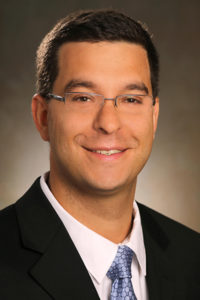
Sepsis treatment continues to plague the medical community with fairly significant mortality, but new advancements in the field are a chance to improve outcomes. Gustavo Cumbo-Nacheli, MD, an intensivist and interventional pulmonologist at Spectrum Health, and his co-presenters, want to raise awareness of those advancements to ultimately improve patient outcomes. That’s the goal of Sunday’s session Resuscitation in Sepsis: Now What Should We Do? at 2:15 pm in room 281 of the convention center, which will focus on various fluids for resuscitation.
“The medical community has dedicated a significant amount of time and resources to overcome this potentially lethal condition,” said Dr. Cumbo-Nacheli, chair of the session. “The more that we can raise awareness of advancement in this field, the more that we can empower physicians with up-to-date strategies to push back.”
Traditional learning has suggested using normal saline solution for fluid resuscitation an—unbalanced crystalloid—Dr. Cumbo-Nacheli said. However, a study published in the New England Journal of Medicine comparing the use of balanced crystalloids vs saline in critically ill adults showed using balanced crystalloids for IV fluid administration “resulted in a lower rate of the composite outcome of death from any cause, new renal-replacement therapy, or persistent renal dysfunction than the use of saline.”
A team of experts will review the different formulations and types of IV fluids for resuscitation in sepsis, including crystalloids and colloids, focusing on the use of low chloride IV fluids and use of albumin.
“We will be discussing the pros, cons, and pitfalls of each of these formulations and ways to tailor the treatment to each patient individually as opposed to a one-size-fits-all approach, which may not be in the best interest of the patient,” Dr. Cumbo-Nacheli said. “We have to carefully weigh what the benefits and risks of fluid resuscitation strategy are.”
Maximiliano A. Tamae Kakazu, MD, FCCP, will give the first talk “Hemodynamic Monitoring During Vasopressor and Inotrope Therapy.” Diego I. Conci, MD, FCCP, will follow with “Fluid Resuscitation. What, Who, When?,” and Dr. Cumbo-Nacheli will finish the session with “Prediction of Fluid Response in Septic Shock: Is It Worth It?”
“I will be discussing prediction models of fluid resuscitation benefits, accomplishments during septic shock, and discussing what’s at stake when we can predict and tailor fluid balances 3- 6- 24-hours and beyond,” he said. “I’ll also talk about strategies of minimizing intervention injuries.”
One focus of the session is the importance of using dynamic measurements—including stroke volume and pulse pressure variation—to measure volume status instead of using static measurements.
Dynamic measurements play a key role in deciding next steps, as they are a more reliable predictor of fluid responsiveness, Dr. Cumbo-Nacheli said.
“We would like attendees to come away knowing the many benefits of mastering dynamic volume status measurements and start considering that static volume status measurements are rapidly falling out of favor and they should not be heavily relied on to make decisions on this very sick patient population.”
“The medical community has dedicated a significant amount of time and resources to overcome this
potentially lethal condition. The more that we can raise awareness of advancement in this field, the
more that we can empower physicians with up-to-date strategies to push back.”Gustavo Cumbo-Nacheli, MD





